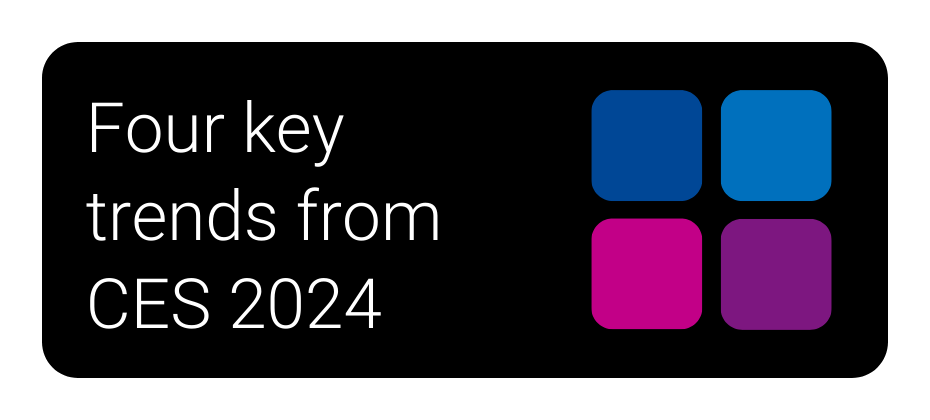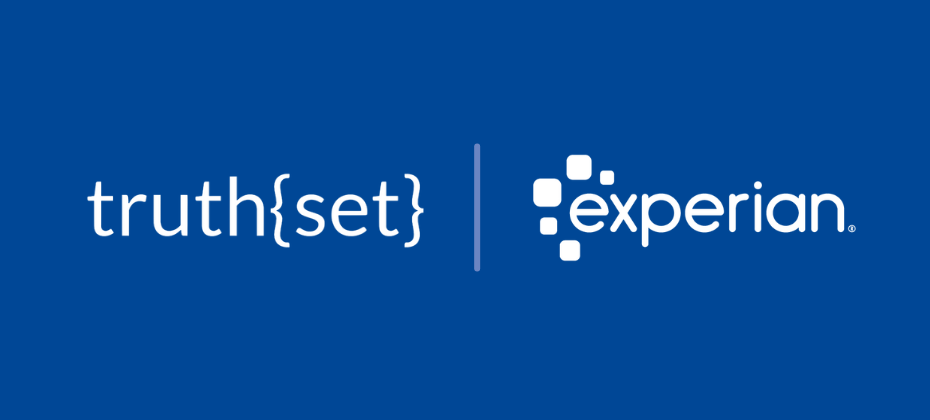At A Glance
AI learns what your data teaches in 2025, "good data" in AI means accurate, current, consented, and easy to connect, or your models lose relevance and your investments underperform. Experian is leading this next era of responsible data where trust, transparency, and innovation come together to make marketing more human, not less.What makes data “good” in the age of AI?
In AI-driven marketing, data quality now defines success. “Good data” in AI isn’t about volume; it’s about the balance of accuracy, freshness, consent, and interoperability. As algorithms guide decisions, they must learn from data that’s both accurate and ethical.
At Experian, we believe good data must meet four conditions:
This is the data AI can trust and the data that keeps marketing relevant, predictive, and privacy-first.
Why does data accuracy matter more than ever?
AI models are only as intelligent as their inputs. Incomplete or inconsistent data leads to bad predictions and wasted spend. As the industry moves toward agentic advertising, where autonomous systems handle campaign buying and optimization, data accuracy becomes even more critical. If your ad server or audience data is flawed, these new AI agents will simply automate bad decisions faster.
Experian applies rigorous quality filters and conflict resolution rules to ensure our data is both deterministic and accurate. Deterministic signals alone don’t guarantee accuracy; they must be verified, deduplicated, and contextualized. Our identity resolution process anchors every attribute to real people, giving brands and platforms the confidence that every insight stems from truth, not noise.

Our data is ranked #1 in accuracy by Truthset, giving our clients confidence that every decision they make is backed by the industry’s most reliable insights.
Just because it is deterministic, doesn’t mean it’s highly accurate. You still need to refine and validate your data to make sure it tells a consistent story. You need to anchor your data around real people.
Why does AI need fresh data?
Outdated data can’t predict tomorrow’s behavior. AI thrives on recency.
At Experian, our audiences are refreshed continuously to mirror real-world signals, from purchase intent to media habits, so every campaign reflects what’s happening now, not six months ago.
And we don’t just advocate for fresh data, we rely on it ourselves. Our own AI-powered models, used across our audience and identity platforms, are continuously retrained on the most current, consented signals. This allows us to see firsthand how freshness drives better accuracy, faster optimization cycles, and more relevant outcomes.
But freshness alone isn’t enough. With predictive insights, our models go beyond describing the past. They forecast behaviors, fill gaps with inferred attributes, and recommend next-best audiences, helping you anticipate opportunity before it happens.
Fresh and predictive data means you’re reaching people in the moment that matters and shaping what comes next. With AI, that’s what defines performance.
How do consent and governance build trust in AI?
Responsible AI starts with responsible data. With 20 U.S. states now enforcing privacy laws, data compliance isn’t optional, it’s operational.
At Experian, privacy and compliance are built in. Every data signal, attribute, audience, and partner goes through our rigorous review process to meet federal, state, and local consumer privacy laws. With decades of experience in highly regulated industries, we’ve built processes that emphasize risk mitigation, transparency, and accountability.

Governance isn’t just about regulation, it’s also about innovation done right. We drive transparent and responsible innovation through safe, modular experimentation, from generative applications to agentic workflows. By balancing bold ideas with ethical guardrails and staying ahead of evolving legislation, we ensure our innovations protect consumers, brands, and the broader ecosystem while moving the industry forward responsibly.
Compliance and governance aren’t just boxes to check; they’re the foundation that gives AI its license to operate.
How does interoperability enable AI’s full potential?
AI delivers its best insights when data connects seamlessly across fragmented environments. Our signal-agnostic identity spine allows data to move securely between platforms (connected TV, retail media networks, and demand-side platforms) without losing context or compliance.

Interoperability isn’t just about moving data between systems; it’s about connecting insights across them. When signals connect across environments, AI gains a more complete view of the customer journey revealing true behavior patterns, intent signals, and cross-channel impact that would otherwise remain hidden.
This unified perspective allows AI to connect insights in real time, improving predictions, performance, and personalization while protecting privacy.
Where do AI and human oversight meet?
AI can make marketing more predictive, but people make it meaningful. At Experian, our technology brings identity, insight, and generative intelligence together so brands, agencies, and platforms can reach the right people with relevance, respect, and simplicity.

Our AI-powered models surface connections, recommend audiences, and uncover insights that would take humans months to find. But our experts shape the process, crafting the right inputs, ensuring data quality, reviewing model outputs, and refining recommendations based on industry knowledge and client goals. It’s this partnership between advanced AI and experienced people that turns predictions into actionable, trustworthy solutions.
What “good data” looks like in action
“Good data” becomes most powerful when it’s put to work. At Experian, our marketing data and identity solutions help brands and their partners connect accurate, consented, and interoperable data across the ecosystem, turning insight into measurable outcomes.
When Windstar Cruises and their agency partner MMGY set out to connect digital media spend to real-world bookings, they turned to Experian’s marketing data and identity solutions to close the attribution loop. By deploying pixels across digital placements and using Experian’s identity graph to connect ad exposure data with reservation records, we created a closed-loop attribution system that revealed the full traveler journey, from impression to confirmed booking.
The results were clear: 6,500+ bookings directly tied to digital campaigns, representing more than $20 million in revenue, with a 13:1 ROAS and $236 average cost per booking. Attributed audiences booked $500 higher on average, and MMGY’s Terminal audience segments powered by Experian data achieved a 28:1 ROAS.
This collaboration shows that responsible, high-quality data and AI-driven insights don’t just tell a better story; they deliver measurable business performance.
Why the future of AI depends on “good” data
The next phase of AI-driven marketing won’t be defined by who has the most data, but by who has the best. Leaders will:
AI success starts with good data. And good data starts with Experian, where accuracy, privacy, and purpose come together to make marketing more human, not less.
Partner with Experian for AI you can trust
FAQs
At Experian, we define “good data” as the balance of accuracy, consent, freshness, and interoperability. We apply rigorous governance, validation, and cleansing across every signal to ensure that AI systems learn from real-time behaviors, not assumptions. This approach turns data into a foundation for reliable, ethical, and high-performing intelligence.
Experian ensures AI-ready data accuracy through advanced cleansing, conflict resolution, and human anchoring. Experian ensures AI models rely on verified, high-quality inputs. Experian’s data is ranked #1 in accuracy by Truthset.
Yes, Experian can help brands stay compliant with privacy laws. Experian’s privacy-first governance framework integrates ongoing audits, legal oversight, and consent management to ensure compliance with all federal, state, and global privacy laws. Compliance isn’t an afterthought; it’s embedded in every step of our data lifecycle.
Experian makes AI more human by pairing innovation with human oversight to ensure AI helps marketers understand people, not just profiles. At Experian, we believe the future of marketing is intelligent, respectful, and human-centered. AI has long been part of how we help brands connect identity, behavior, and context to deliver personalization that balances privacy with performance. Our AI-powered solutions combine predictive insight, real-time intelligence, and responsible automation to make every interaction more relevant and ethical.
Marketers can activate Experian’s high-quality data directly in Experian’s Audience Engine, or on-the-shelf of our platform partners where Experian Audiences are ready to activate. Built on trusted identity data and enhanced with partner insights, it’s where accuracy meets accessibility, helping brands power campaigns with confidence across every channel.
Latest posts

Every year, the Experian team attends the Consumer Electronics Show (CES) in Las Vegas, to immerse ourselves in the world's most significant consumer tech showcase and stay at the forefront of the latest technological advancements and innovations that shape the AdTech industry. This year's event was a vibrant melting pot of innovation and vision, from streamers taking a bigger bite of the advertising pie to the emergence of AI-powered solutions and drone delivery services. Amidst these advancements, the dynamic interplay of technology, media, and advertising raised important questions, especially in the context of evolving regulations and cookie deprecation. During CES, we captured insights from various thought leaders, and in the coming months, we'll be sharing these valuable perspectives with you. Watch the video below for full insights coming from our content studio onsite during the event. Or, keep reading for a recap on four key trends from CES and what they mean for your business in 2024! “My first CES was a major success. You could feel the buzz in the air as new ideas and partnerships were being created within and across industries. The intersection of the different players within retail media, connected TV, retail technology, the demand and supply-side, and agencies all in an ever-changing world of regulation and privacy begs for a solution that can maximize a successful outcome for all.”anne passon, sr director, sales, retail & cpg 1. Audience targeting: How first- and third-party data work together A central theme at CES was the importance of audience targeting, highlighting the crucial role of first-party data. However, it’s clear that to maximize its potential, this data needs to be augmented with sophisticated identity solutions and enriched with third-party insights, all while navigating the complexities of privacy regulations. This integrated approach is vital to understanding audiences and for creating more effective marketing strategies that comply with privacy regulations. 2. Standardizing metrics in retail media networks The challenges around retail media networks, particularly in terms of standardizing metrics like incremental return on ad spend (iROAS), were a hot topic at CES. This complexity around this topic underscores the need for neutral, expert third parties to help bring clarity and consensus, aiding businesses in navigating this multifaceted domain. 3. The challenge of switching data solutions Discussions covered the broader challenges associated with transitioning to new data solutions. For businesses, this involves a critical assessment of the benefits versus the costs and complexities of adopting new platforms or systems. This decision-making process is increasingly significant as data strategies become integral to marketing success. 4. Identity solutions in a cookieless future With the industry moving toward a cookieless future, the spotlight at CES was on the importance of robust identity solutions. Understanding the functionality and necessity of various universal IDs is essential to minimize data loss and maintain effective targeting. Investing in flexible and adaptable identity solutions like the Experian Graph is essential to maintain effective targeting and audience engagement in this new landscape. Announcements and advertising innovations at CES 2024 CES was a stage for significant announcements and innovative marketing initiatives: Criteo and Albertsons announced their collaboration in retail media. Instacart's partnership with Google for enhanced shopping ads and AI shopping carts. NBCUniversal's advancements in streamlining programmatic advertising. Brands like Netflix, LG, Freewheel, and Amazon Ads also captured attention with their creative marketing strategies, ranging from unique collaborations to themed promotions and captivating events. These insights from CES provide a glimpse into the future of technology, media, and advertising. They highlight the need for adaptability, innovation, and informed decision-making in these dynamic industries, especially in the context of privacy regulations. Stay tuned for our series of posts where we'll dive deeper into these topics, sharing exclusive insights from industry thought leaders. Follow us on LinkedIn or sign up for our email newsletter for more informative content on the latest industry insights and data-driven marketing. Contact us Latest posts

In this article…A history of ad-supported TVThe resurgence of ad-supported TV models Free ad-supported streaming vs paid ad-supported TV What FAST popularity means for marketersThe future of ad-supported TV In the early days, streaming services were presented to viewers as convenient alternatives to cable that allowed you to get content whenever you wanted it — without ads. But as standalone streaming platforms have grown in number and prominence, often charging high monthly costs for subscription-based content and continually hiking their rates, many are warming back up to the idea of ads if it means lower monthly fees. Cue free ad-supported TV (FAST) streaming services: free video content with no paid subscription requirement. These services generate revenue through advertising and deliver content with periodic commercial breaks to support their free model. This option has become popular as viewers have sought out cost-effective alternatives to traditional scheduled television. Free streaming TV platforms such as the Roku Channel, Tubi, and Pluto TV are growing, with one in three U.S. viewers subscribing to free ad-supported TV streaming services. If premium streaming platforms keep raising their monthly costs, we can predict that FAST will continue to grow. In this article, we’ll talk about the current state of the ad-supported TV climate, including the opportunities and challenges it poses for marketers. A history of ad-supported TV Historical context is crucial to understanding the current climate of ad-supported TV and its implications for your marketing. Before the rise of cable TV, television was free for viewers, with advertisers covering the costs. The first TV commercial, a 10-second spot for the Bulova Watch Company, aired in 1941 during a baseball game and cost the company $9. This ad kickstarted the era in which advertisements funded the TV model, which quickly surpassed radio in popularity and led to an explosion of content. From 1956 to 1988, commercials became embedded in culture, giving rise to marketing icons like Ronald McDonald and memorable campaigns like Nike's “Just Do It.” From 1989 to 2006, the world saw the rise of online entertainment and advertising with the invention of the World Wide Web — and subsequently, online video broadcasting and advertising emerged. But between 2007 and 2014, over-the-top (OTT) broadcasting and connected television (CTV) innovation disrupted traditional broadcasting, with ad-supported streaming gaining greater prominence. Platforms like Netflix and Hulu allowed viewers new freedom from the confines of scheduled programming. By 2022, CTV advertising thrived thanks to programmatic advertising, which allowed businesses to reach targeted audiences with relevant campaigns. Ad-supported streaming became widespread as platforms like Netflix and Disney+ incorporated advertising into their models. Free ad-supported TV (FAST) emerged as a form of advanced television that displaced traditional cable and satellite TV. Recent years have witnessed a notable shift back to ad-supported streaming television due to the proliferation of streaming services, subscription fatigue, and the desire for cost-effective content consumption. Looking ahead to the future, TV advertising is expected to continue growing with the potential to be influenced by innovations like virtual reality and artificial intelligence. Why did the popularity fade? Ad-supported TV waned in popularity due to the introduction of cable TV and subscription-based models. Cable TV offered ad-free content for a subscription fee, which reduced the appeal of traditional ad-supported broadcasts. Uninterrupted content became a critical selling point for cable providers, but it created fragmentation for advertisers and made it more challenging for them to reach their target audience. With cable and, later, satellite TV dominating the market, advertisers had to adapt their strategies. The decline in the popularity of ad-supported TV led to a decreased reliance on traditional advertising methods, and marketers began exploring alternative avenues to connect with consumers effectively. The recent resurgence of ad-supported TV, particularly in streaming services, indicates a shift in viewer preferences. You can utilize targeted advertising cost-effectively, as viewers prefer free, ad-supported content over subscription-based models. The resurgence of ad-supported TV models The resurgence of ad-supported TV models can be partly attributed to the COVID-19 pandemic and changing viewer preferences. In 2020, stay-at-home measures led to a surge in media consumption, and people turned to streaming for entertainment. This shift provided a unique opportunity for ad-supported models to regain popularity. But as viewers explored various streaming options, subscription fatigue set in. Paid streaming proliferation increased costs, and people began reconsidering spending on multiple subscriptions. The pandemic triggered a fundamental shift in TV consumption and caused viewers to favor ad-supported streaming models that offered free content with occasional commercial breaks. In fact, LG Ad Solutions research revealed that 80% of American TV viewers use free ad-supported streaming services — and 63% express a preference for this model. This finding challenges assumptions made during the initial stages of the pandemic, where subscription-based consumption seemed dominant. The study suggests that as subscription fees accumulated, viewers sought more content without increasing costs, driving a preference for ad-supported streaming. Furthermore, the landscape of ad-supported TV saw notable entries from major streaming platforms: HBO launched its ad-supported model in June 2021. Netflix and Disney+ introduced their ad-supported tiers in late 2022. Amazon announced in September 2023 that they would be launching their ad-supported service in 2024. These developments emphasize the industry's recognition of the demand for ad-supported content and further contribute to the prominence and endurance of this model. Most popular platforms A report from Samba TV showed that one in three U.S. viewers subscribes to free ad-supported TV streaming services, such as Pluto TV, Tubi, or the Roku Channel. The report highlights Amazon's Freevee as a standout due to its high viewership growth in the first half of 2023 compared to competitors. Here are some details to note about Freevee and its major competitors: Freevee (Amazon Prime) With a focus on bringing diverse content to its audience, including thousands of premium TV shows and movies, Freevee has positioned itself as a go-to destination for those looking for quality programming without subscription fees. In early 2022, Freevee had 65 million monthly active users, and their ad prices, similar to competitor costs, range between $13 and $24 per day — around $400 and $720 per month, respectively. Pluto TV (Paramount) As a pioneer in the FAST streaming space, Pluto TV, now under Paramount, boasts a diverse range of 250+ channels. According to Statista data from November 2022, 8% of Americans watched TV on Pluto on a daily basis, with men watching more often than women. You can strategically engage with Pluto TV's varied audience for around $999 a month, with advertising costs influenced by factors like viewership and channel prominence. Tubi (Fox) Surpassing many competitors in viewership, Tubi, owned by Fox, offers an extensive collection of free content (200,000 movies and TV episodes) and enjoys 74 million active monthly users. Tubi has experienced the fastest growth among young, diverse audiences and has produced or acquired 200 titles that almost 54 million viewers have watched. You can market to viewers on Tubi for $10 to $45 daily or $300 to $1,350 monthly. The Roku Channel With over 350 channels and premium original content, The Roku Channel has become an important player in the FAST space. Approximately 38% of streaming hours in U.S. households are spent on the Roku Channel. With Roku Ads Manager, you can get started with only $500. New players The FAST industry is seeing an influx of new players all the time, which is contributing to the industry's growth and innovation. As traditional subscription-based models adapt to include ad-supported tiers, the competition in the ad streaming sphere has intensified, prompting both established and emerging platforms to explore the FAST model. Statista reports that the number of users in the FAST market is expected to reach 1.1 billion by 2028! The recent entry of industry giants like Netflix into the ad-supported realm has set the stage for significant shifts. When Netflix announced and launched its ad-supported tier in late 2022, the industry experienced a notable spike in CPMs (cost per mille/cost per thousand impressions). This reflected the initial scarcity of users on this tier. As more subscribers embraced the ad-supported offering, CPMs decreased. Subscription video-on-demand (SVOD) platforms, including Disney+, are also incorporating ad-supported tiers into their models to cater to viewers' preferences for cost-effective streaming options. Industry reports illustrate a decrease in CPMs as more users engage with ad-supported tiers, which creates a vibrant, competitive environment for advertisers like you. Free ad-supported streaming vs paid ad-supported TV The affordability of free ad-supported streaming services is attractive for viewers seeking cost-effective alternatives to traditional cable or non-ad-supported streaming platforms. Platforms like Pluto TV and Tubi provide viewers with a wealth of content without the financial commitment of a subscription. Free ad-supported streaming services like these have gained traction for their cost-effectiveness. In contrast, paid ad-supported TV models present a unique proposition — pay for the service and enjoy reduced subscription costs by opting for an ad-supported plan. These models provide users with a middle ground between subscription-based and free ad-supported streaming. The future popularity of free ad-supported streaming versus paid ad-supported streaming is likely to be influenced by a combination of viewer preferences, content strategies, ad experiences, and broader industry dynamics. As both models evolve, streaming services will continue to experiment and adapt to meet the diverse needs of their audiences. What FAST popularity means for marketers The shift towards FAST aligns with changing viewer preferences. This makes things easier for your marketing, as you can: Engage a broader audience: Without the barriers of subscription fees, and the ability to place ads in front of diverse demographics, you can customize campaigns for specific audiences and ensure your messages resonate with viewer interests. Convey your message to a captive audience: The rise of FAST also implies an increased viewership of commercials, as these services typically feature ad-supported models with limited options for viewers to skip or fast-forward through ads, creating a more captive and engaged audience. Expand your brand exposure: The cost-effectiveness of ad-supported models provides a valuable avenue for brand exposure without the hefty price tags associated with traditional TV advertising. As a marketer, it’s essential for you to understand the dynamics of ad-supported TV platforms so you can recognize unique advertising formats, optimize campaign frequency to prevent ad fatigue, and embrace the potential for localization and personalization. As advertising evolves with the growing popularity of FAST, you have an opportunity to stay ahead of the curve, craft compelling campaigns, and maximize your reach at a time when ad-supported streaming is at the forefront of entertainment. The future of ad-supported TV The re-emergence of ad-supported TV, along with recent innovations, indicates that the future of this model is bright. Teevee Corporation, a hardware startup led by the co-founder of Pluto TV, is an excellent example. It is set to unveil a groundbreaking ad-supported physical television that won’t cost consumers a single cent — as long as they’re okay with a second integrated screen that displays ads while they watch the main screen. This TV is distinct from streaming services and uses automatic content recognition (ACR) for contextually relevant ad delivery. Teevee's approach introduces a new dimension to viewer engagement that combines traditional broadcasting with targeted advertising. Major streaming platforms are actively contributing to the evolution of ad-supported TV as well. Amazon made the strategic move to bring Amazon Original titles and additional ad-supported channels to Freevee to demonstrate its commitment to the ad-supported market. The platform introduced 23 new ad-supported TV channels from major entertainment players such as Warner Bros. Discovery and MGM. As a result, Amazon's Freevee experienced tremendous growth in viewership in the first half of 2023, up 11% year-over-year. These recent advances illustrate what the future of streaming with ad-supported TV may look like moving forward, where hardware innovation meets strategic content integration, and major platforms compete to enhance their ad-supported offerings. How Experian can help Although the FAST industry is rapidly evolving, Experian stands at the forefront with powerful data-driven solutions that empower you to take advantage of this valuable marketing opportunity. Consumer Sync is a robust identity solution that empowers advertisers by facilitating collaboration and offering insights that contribute to more effective and targeted FAST campaigns. Audience segmentation, attribution, and campaign optimization play vital roles in FAST advertising. Our Consumer View solution provides industry-leading data solutions for audience segmentation, which allows marketers to predict buying behaviors and deliver personalized experiences. Connect with Experian's TV experts As you explore the possibilities of ad-supported TV, Experian offers the expertise and solutions you need to elevate your marketing strategies. Connect with our TV experts today to gain a deeper consumer understanding, refine your targeting, and ensure the success of your campaigns. Connect with our TV experts today Latest posts

Experian continues to lead in data accuracy according to Truthset's latest analysis Advertisers, technology partners, and agencies are all chasing accurate data to power their marketing strategies. But not all data is created equal. Truthset’s latest findings confirm Experian's leadership in third-party data accuracy, giving brands and agencies confidence in every decision they make. Accurate data is the foundation for predictive insight, real-time intelligence, and AI-powered personalization. Experian’s AI-driven solutions help marketers move from data to action, delivering more relevant messages with less waste. Truthset's independent study found that up to 51% of ad targeting data is inaccurate, with accuracy rates ranging between 32% and 69% across providers. This reinforces the importance of validated, trusted data from partners like Experian. The data quality challenge Inaccurate data can lead to: Wasted ad spend Without accurate data at the start, marketers can’t reach the right audiences, resulting in wasted impressions. Privacy and compliance risks In an increasingly privacy-centric world, advertisers need to be especially mindful of accurate targeting to avoid putting their brand reputation at risk. Poor campaign performance Low-quality data skews metrics and attribution models, making it difficult to measure campaign success and optimize spend. Low-quality data can come in different forms, like inconsistent or outdated information – think demographics (age, gender) and interests (dog versus cat lover), or simply the wrong relationship can be made between data sets. Data records can be incomplete or duplicative, and data segments could be misclassified or inaccurate. For example, a kids' snack food company may think they’re targeting a 35-year-old man, who lives in the suburbs with his young family, when in fact it’s a 65-year-old woman who moved to the city after her kids went to college. That's wasted investment. As data ecosystems grow more complex, that's where Experian's AI-powered simplicity comes in. We can clean, enrich, and infer missing signals, helping you act on incomplete or imperfect data with greater confidence. Building a solid data foundation Accurate data is essential for personalization and trust. According to eMarketer, more than 75% of internet users worldwide are willing to share their email address, brand interest, and name in exchange for personalized experiences. Without accurate data, marketers won’t be able to provide the level of personalization that consumers desire. But personalization at scale requires more than just data, it needs intelligence. Experian's AI-powered capabilities, including predictive models, transform clean, validated data into meaningful engagement strategies that balance performance with privacy. Independent validation from Truthset ensures that Experian’s data remains among the most accurate in the ecosystem. "As cookies and mobile ad identifiers continue to phase out, consented, durable identifiers (hashed email, postal addresses) are going to serve as the foundation for identity solutions of the future. And the only way to ensure you are transacting on the highest quality identity and demography data is to actively validate the data you rely on with a third party.” Chip Russo, President at Truthset Experian's commitment to data accuracy Since joining the Truthset Data Collective in 2023, Experian continues to be the industry leader in data accuracy. Truthset's latest Q2 2025 analysis reaffirms our leadership in data accuracy: Experian is the #1 data provider of largest volume of high-accuracy hashed emails (HEMs) Experian ranks #1 in accuracy for eight marketing data attributes, including but not limited to Age, Geography, Presence of Children, and Education Experian ranks #1 or #2 for 22 of the 24 attributes, and #3 for the two others (out of 12 companies being analyzed) Experian consistently has the largest number of HEMs that are 90% or more likely to be accurate “As a member of the Truthset Data Collective, Experian received top ranks across a variety of categories for its data. The entire digital advertising world runs on data, but focusing on data accuracy is going to drive the next phase of innovation for the industry, enhancing ROI for advertisers, CPMs for publishers, and relevant experiences for consumers.” Chip Russo, President at Truthset As Truthset's recent study highlights, the data matched between hashed emails and postal addresses is crucial, underpinning everything from targeted ads to TV audience measurement. Highly accurate HEMs linked to high-quality demographic data should be the foundation of any marketing plan. Advertisers are able to overcome the complexities of identity resolution by tying online and offline touchpoints together to deliver a consistent message across channels. Real-time relevance, powered by ethical AIExperian combines validated identity data with intelligent technology to deliver marketing that works for people and brands. Companies are striving to eliminate marketing waste and provide consumers with personalized marketing and the advertising industry can have confidence that Experian’s marketing data has been externally validated as being highly accurate. The accuracy of our data will power better marketing initiatives, like insights, targeting, identity, and measurement. Whether you're optimizing for reach, relevance, or ROI, AI is changing how marketing works. Experian’s human-centered, privacy-first AI makes it easier to adapt, act faster, and connect with consumers in ways that are more meaningful. Let's start a conversation about how we can fully realize the potential of data-driven advertising together. Contact us today FAQs What is Truthset, and why does their validation matter? Truthset is an independent data validation company that reviews and ranks data providers based on accuracy. Their ratings help advertisers understand which data sources they can trust. Experian ranks #1 in data accuracy according to Truthset. How does Experian’s performance compare to others in Truthset’s study? Experian ranks #1 for accuracy in multiple categories, including Age, Geography, and Presence of Children, and holds the largest number of hashed emails that are 90% or more likely to be accurate. Why is data accuracy so important for marketers? Accurate data is important for marketers because it leads to more efficient targeting, reduced ad waste, and better campaign performance. It also reduces compliance risk by helping advertisers engage responsibly. Experian's data is ranked #1 in data accuracy according to Truthset. How does Experian use AI responsibly? Experian’s privacy-first, AI-driven models clean, enrich, and validate data while respecting consent and ethical standards. How can advertisers get started with Experian's data? Connect with the Experian team to learn how our validated data and AI-powered solutions can strengthen your targeting, insights, and ROI. Latest posts








